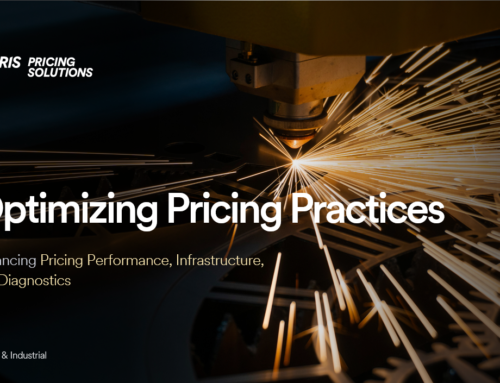Use the Pricing Waterfall to Drive Profits
For the average business, a mere 1% increase in price leads to a whopping 12.5% improvement in profitability. That’s the single most powerful lever a company has for boosting the bottom line. The pricing waterfall, a tool for identifying hidden costs and expenses, is one of the most effective ways of capturing that 1% – or more!
Most executives believe prices are driven by the market, and that they have very little control over them. And so they engage in “firefighting,” responding to competitive situations, rather than taking a proactive approach to pricing. The sales department has an unusually high degree of influence, which leads to “let’s make a deal” pricing. Consequently, it’s not the best customers that get the best price; it’s the best negotiators.
The key is to gain control over pricing, and that’s where the pricing waterfall comes in. It is a powerful tool that cascades the discounts that companies give customers.
Most companies stop measuring pricing at the invoice price (list minus volume discount). For example, if something is priced at $100 and the discount was 15%, the company measures price realization at $85. But there are many other discounts and value-added features that impact price realization, such as rebates, warranty, free delivery, payment terms, technical support – the list goes on. Most companies offer five to 10 of these additional discounts, which one leading company called “the swamp” because it didn’t know what was happening, but knew it was scary!
When you account for all of these discounts, you get your “pocket price” – how much you actually receive after deducting all costs related to that sale. The pocket price is typically 20%-30% less than the total of the invoice. The impact on profitability is enormous, and can drive many companies into a situation of having unprofitable or marginally profitable customers.
The price waterfall brings visibility to this important issue. Here are some examples of highly profitable changes that were made as a result of doing the waterfall analysis.
Examples of Profitable Changes
• A chemical supplier provided free delivery and, “if necessary,” allowed the sales force to waive charges on emergency deliveries. The company discovered that about 50% of orders were classified as “emergencies” – at a cost of $5million a year – so it implemented a minimal charge for emergency orders. The result: Emergency orders dropped to 10% of all orders and the company saved $4-million without losing any volume.
• A building products company provided free returns. Upon doing the waterfall analysis, it found that returns had ballooned from 10% to 35% of all orders. The company changed the policy so the customer was still allowed to return the product, but was responsible for the delivery charge. The impact: Customers got more precise about their ordering. Returns declined by 50%, leading to a .5% improvement in the bottom line.
• A magazine publisher’s waterfall analysis revealed that small advertisers were not profitable. They were not paying their bills on time, were using a lot of the creative resources and were running their ads for short durations. The publisher reconfigured its offer by requiring prepayment for the ads and providing creative support only when there was a commitment to run the same ad at least six times (in return for a healthy discount). The results: better collections, profitable transactions and happier customers as they found that their business grew when they committed to a frequency of six times.
There are many more such stories. From my experience, any company can benefit from doing a waterfall analysis.
Management guru Peter Drucker coined the famous phrase “what gets measured, gets managed.” That’s why the pricing waterfall is an essential tool. It helps companies break through their pricing inertia because, as the saying goes, “seeing is believing.” Most companies can improve their bottom line by more than 10% by gaining control of their waterfall, rather than drowning in discounts.
Paul Hunt is the president of Pricing Solutions Ltd. His pricing column appears monthly in the Financial Post, and he is a regular blogger at the FP Executive blog.





